What are The Key Competencies of a Modern Day Leader? | Laura Hilger, Carmen Coleman and Estrada
Key Points
-
There is great importance of developing leadership competencies that align with personalized, competency-based learning to drive sustainable change.
-
The Lead for Learners Network and the development of the Portrait of a Leader highlight the role of collaboration and shared vision in educational transformation.
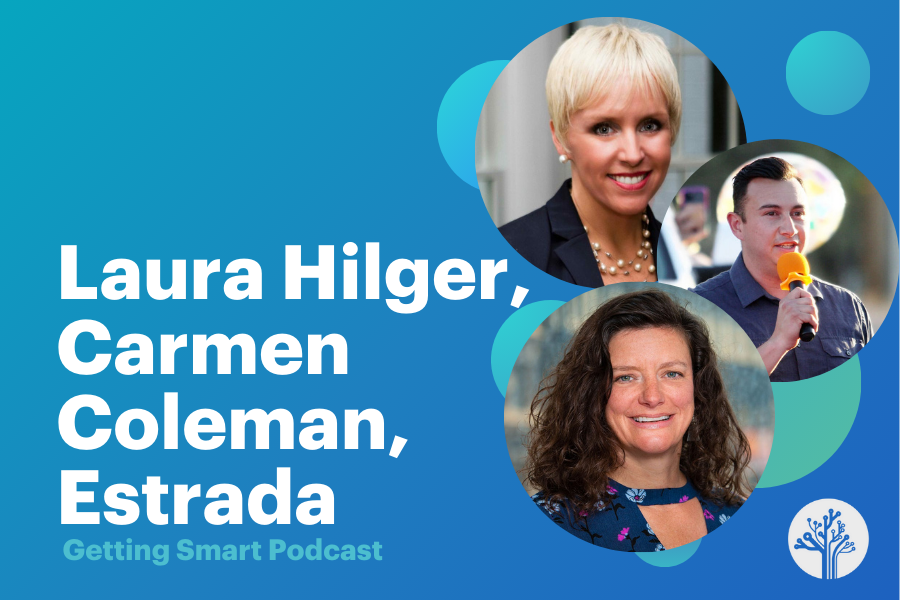
In this episode of the Getting Smart Podcast, host Rebecca Midles dives into the essential competencies of modern-day leadership with Laura Hilger, Senior Director of Teaching and Learning at KnowledgeWorks. Joined by Carmen Coleman and Estrada, the conversation explores the development and impact of the Lead for Learners Network and the Portrait of a Leader. These initiatives aim to guide educational leaders towards sustainable change through personalized, competency-based learning. Discover how collaborative processes and strategic leadership development can drive transformation in educational systems, ensuring leaders are equipped to foster equitable, learner-centered environments. Tune in to learn about upcoming opportunities and insights into building robust leadership pipelines.
Outline
- (00:00) Introduction to the Getting Smart Podcast
- (02:36) Overview of the Lead for Learners Network
- (04:46) Development of the Portrait of a Leader
- (07:49) Collaborative Process Behind the Portrait
- (10:58) Impact and Implementation in Local Contexts
- (14:23) Sustainable Change and Leadership Development
- (20:37) Reflective Practice and Professional Learning
- (22:07) Upcoming Events and Opportunities
Introduction to the Getting Smart Podcast
Rebecca Midles: You are listening to the Getting Smart Podcast. I’m Rebecca Midles. Today we’re trying to understand what are the core competencies of a modern leader? When I think of essential competencies of a leader, I think of visionary thinking, unwavering commitment to equity, the courage to embrace innovation, and the humility to empower others.
In my world, we spend a lot of time talking about personalized learning and student outcomes. We share ideas of graduates who will be critical thinkers, innovators, problem solvers, or, as I like to say, solutionaries. In our educational careers, we have spent countless hours in professional learning. I can think of so many Sundays, how many times I’ve sat there crafting new units or projects, obsessing over new student data.
But what about the leaders? What do we do for the leaders of our system? Laura Hilger, who’s joining us today, and I share our very first dive into site leadership, starting with the same learning system, Highland and Anchorage, Alaska. I know I was wrestling with this transition, even though I was more than grounded in the learning model that we were a big part of. Leadership is a system, and art is a system that’s very layered.
So how do we ensure school and district leaders are equipped, or are they even willing, to undergo the same transformation we demand of our students and educators? What does it really take to lead a transformation? Is it enough for a good administrator, or do we need something else, something more transformational?
Because if we’re serious about creating equitable, learner-centered schools, we need leaders who are just as courageous and forward-thinking as the graduates we aspire to support. Let’s start the conversation. Welcome, Laura. You know, you’ve got some guests with you today too. We’re really looking forward to having this conversation.
Laura Hilger: Yes. Hi, Rebecca.
Rebecca Midles: Hello.
Laura Hilger: With me, we have Carmen Coleman and Estrada, who are steering committee members for our network, and we are just so thankful and appreciative to be here. It’s an honor. The Getting Smart podcast is such a dynamic, energetic resource for educators, so we’re just thrilled to be here. Thank you.
Rebecca Midles: I am so glad. Yes, you mentioned Carmen, Chief of Transformational Learning and Leading at Ohio Valley Education Cooperative, and Estrada, Teaching and Learning Coordinator of Secondary Schools at Mesa Public Schools. You can correct me if I’m wrong.
Overview of the Lead for Learners Network
Rebecca Midles: Laura, can you share a little bit about the Lead for Learners Network? What is it, and when did it start?
Laura Hilger: Yes, I would love to. Lead for Learners is a national network facilitated by KnowledgeWorks. We have been desiring to create a national network for a long time. As you know, with any strategy, it does take a while to get momentum, but ours is growing across the country. It is meant to be a resource dedicated to all educators who are working in systems transformation through personalized, competency-based learning.
But it also covers a plethora of other transformation topics. We created it several years ago as a way to connect educators across the country and provide a venue for them to learn with one another, share challenges, and share strategies in an easy way. The best part is that the content is driven by its members.
They discuss topics that are important to them and relevant to them at the moment. They can do that via our online community forum and through our monthly events. We host lots of different kinds of events, which I’m sure are similar to things that Getting Smart does as well. We have one, for example, called Ask Me Anything, where a member will get on and talk about their learning community and how they’re addressing transformation.
The other really wonderful thing is that it is free to join and open to everyone.
Rebecca Midles: That’s wonderful. As you’re listening, we always put links to any resources mentioned in the show notes. If you’re interested in what you just heard, we’ll have a link for you all to go to. Thanks for sharing the start of that. I think I had known that it was underway. I think you’ve had some conference sessions as well as you were gathering more input from other leaders who might have come into those sessions. So I know you were making intentional efforts to collect lots of insights.
Development of the Portrait of a Leader
Rebecca Midles: What inspired the development of this portrait of a leader, and how does it aim to address challenges, as you say, in personalized, competency-based learning?
Carmen Coleman: Several of us on the steering committee have experienced firsthand the power of a portrait of a learner or a portrait of a graduate. Personally, I came upon that by accident. We just thought, doesn’t it make sense to think about what we want our diploma to mean?
How can we articulate that? Of course, we could not consistently. We could tell you what we hoped it meant, but the answers weren’t good. There was such power when we said, “Here’s what we want at the end of the journey for our learners here. Here’s how we want them to be equipped.” That is such a powerful lever for change. So many of us had experienced that, and it seemed the natural next step. Let’s get really clear about what we are after for these leaders. These are different leaders when you can lead this kind of change. We wrestled with it. Competency-based is a term used all the time in lots of different ways. Personalized is another one. We wanted to get really clear about what that was, what we meant when we said it, and then what are the skills that leaders who can do this have. That brought us to the portrait we have now, through many iterations. We think that clarity in the actual portrait itself gives everyone a common North Star, just like a portrait of a learner. Our hope is that it serves as the North Star. Here’s what we’re after, here’s what it takes to get there, and let’s share this widely and develop a common understanding of what we want for our students and what kinds of leaders it will take to get us there.
Rebecca Midles: That’s wonderful. I’m going to circle back on what you were sharing after this next question. I just want to give you some time to think about it. I also want to think about how some of these that you’re mentioning are transferable for student leaders and teacher leaders too, and how they also show up in different and rich contexts as well as leading change for a large system.
Collaborative Process Behind the Portrait
Rebecca Midles: Can you describe the collaborative process then? We talked about the fact that you brought people together. If it was longer than a year, you’ve been gathering input. You’ve had opportunities at symposiums and gatherings. What was the collaborative process behind creating that portrait, and how are educators and leaders from the field contributing to its development, and maybe how will they continue to do so?
Carmen Coleman: The members of the steering committee come from across the country from varied contexts, varied locations, and that group is such a powerful and wonderful group to be a part of. The perspectives that group represents are really diverse. Initially, we started with that group, the people on the steering committee, and then we did all kinds of things. We did surveys. We took iterations of the portrait back to our places of work and to the different people that we serve. We shared those very broadly. For example, in Kentucky, I shared that with the Student Voice Team, shared it with—honestly, I shared it with anybody who would listen, from my own colleagues to people in districts. We wanted a really broad, representative range of feedback on that.
Rebecca Midles: Wonderful. I can see how you already made that connection to how you had students show up in that space as well. Wonderful. Thank you.
Estrada: Just to add to that, many of us conducted forums, both virtually and in person, to gather various leaders and stakeholders from our contexts. I have to give a shout-out to the KnowledgeWorks team with Kyle, because after we gathered all this information and scripted conversations or recorded Zoom meetings, the KnowledgeWorks team disaggregated that. In our next in-person convening, following these different forums and conversations we were having with the portrait, they disaggregated all the data points and brought a new iteration to us as the steering committee met again to go through that continuous refinement of the cycle. It was definitely a team effort with lots of perspectives, and a culminating part of that was presenting an artifact, if you will, of the portrait of a leader during the Aurora Institute this past November. We had a pre-session at that conference to share the portrait and get feedback from practitioners leading the work in PCBL from varied contexts.
Rebecca Midles: I was able to pop into that session at Aurora. It was wonderful to see so many well-respected leaders in this field in one room, talking about leadership and being vulnerable and sharing about how to grow that capacity. I hope that you guys are going to try that again. Maybe we’ll have another opportunity for listeners to see that.
Impact and Implementation in Local Contexts
Rebecca Midles: In your role as steering committee members, how have you seen this being impactful in your local context? Or how do you maybe forecast or predict how it will be useful in your context where you serve?
Estrada: I’m in Mesa, Arizona, and KnowledgeWorks is leading a national cohort for emerging leaders, but we’re also going to have an Arizona-specific emerging leader cohort. Laura is going to be the main educator facilitator of the learning that these emerging leaders are going to go through, which is going to be driven by the skills, competencies, and attributes of the portrait of a leader.
In the Arizona context, having our own cohort, I’m excited for leaders from across the state to come together. We have what’s called the Arizona Personalized Learning Network that KnowledgeWorks has assisted with forming, and it’s for districts throughout the state, two of which I’ve worked in: currently in one, Mesa, and I was in Santa Cruz Valley Unified School District as well as the principal there.
We’re going to be able to bring leaders from each of these districts together, emerging leaders, and engage in the portrait of a leader and what it means to lead PCBL work. I know the roster of leaders coming ranges from teachers to instructional coaches to current assistant principals. We’re building the bench within the AZPLN. I’m excited for the opportunity.
Carmen Coleman: One of the things we’re doing here in Kentucky is trying to share the portrait and the work that is happening with our university prep programs that are preparing, from teacher leaders to superintendents, principals. I have an email ready to go out to those in Kentucky today.
We’re also sharing with all of our co-ops. I think the more people can start to use and reference this portrait of a leader, the more likely we are to be able to start to see it really come alive and become the resource that we think it can be. School boards are another really important audience. Anyone who is hiring leaders—we hope that this helps to inform what they should be looking for. That’s really important. Estrada made reference to this: lots of local districts have grow-your-own programs. We just want to get this information out there and say, “Here’s the North Star to develop the kinds of ecosystems we need. Saturation is the strategy.”
Rebecca Midles: I heard you say pre-service for leaders, and I heard you guys talk about regional context. I even heard about, like, you know, in the days of—Laura can relate to this, but like job fairs, like when you’re going to those situations for how you’re looking for site leaders. But also just how districts can promote or advertise the kind of leaders they’re looking for to come to their district and how that can be associated with that work, which speaks to that capacity leadership pipeline.
Shorts Content
Sustainable Change and Leadership Development
Rebecca Midles: Maybe could you speak more about how you think this will then also drive sustainable change? Because, you know, naming the thing and being transparent about leadership and what we’re looking for—how do you plan or think about how this will impact sustainable change for your educational system, but also others?
Estrada: That’s a great question. I put it to some of my leaders this way: I said, “What does our bench look like when X, Y, and Z retire, or when this person moves to a different role, or if this person leaves a school? What does our bench look like, and how are we equipping those emerging leaders, regardless of title, to be prepared to step into those roles to lead PCBL work?” Not just to step in and lead a school.
I share this constantly with my team here in Mesa: there’s a difference between leading a school effectively and leading PCBL, student-centered, equity-driven work. Building the capacity in our leaders is, in my opinion, one of the most important things outside of creating successful solutionaries—I think you put it, Rebecca—in our learners, and I love that word. To build sustainable change, we’ve named it. We have the portrait leader. We have, like Carmen mentioned, the North Star. Now it’s taking leaders regardless of title and starting to help instruct, equip, train them, and expose them to teachers in the classroom and how they can be a leader of PCBL work within their sphere of influence. How instructional coaches within their sphere of influence and so on and so forth with everyone that leads in a school system.
In the portrait of a leader, as you dive into it, you’ll see a section like “attributes and action,” and it really calls out how, if you’re a teacher leader or an instructional coach, how this applies to you and your role. I think it’s important for sustainable change with these works because oftentimes, and more often than not, a principal of a school is leading the change. If that principal leaves—
Rebecca Midles: Mm-hmm.
Estrada: We’ve all probably seen how a school dynamic has changed. But if we can create sustainability within teacher leaders and student leaders and instructional coach leaders, if there’s just leadership leading the work at all levels of the school system, if that principal leaves, the work sustains, and the portrait of a leader helps provide that guide and step-ins to how people in various roles can have an impact in their sphere of influence for that sustainable change.
Rebecca Midles: Love that example. You might have more to add to this, but I’m just going to—whenever I think about these pieces, I think, how would I use this? I know that I’ve been fortunate enough to be a part of a district that really supports leadership to the point where students come first and adult comfort comes second.
If there was a site leadership team, they would recognize that the leader that is the head of the school has these strengths but could benefit from an assistant principal or other folks on their team who have other strengths to bring more of a well-rounded approach to the school. To the point where if a principal left and an AP moved in, they would look for that next AP to offset.
I can see this being used to even look at site leadership teams or district leadership teams. Is that something you guys have all talked about as well?
Laura Hilger: Yeah, absolutely. I think when we were grappling with why we are putting our energy in this, coming from the steering committee, why is this going to be one of our key things that we really want to get out in the world, they all talked about that sustainability piece. I think it comes up again and again.
You can have these dynamic leaders and you can have great leadership teams, but how often do we really invest in our development? In a way in alignment to help that shared vision that we spend tons of community hours creating because we want what’s best for our young people. Because we do want that, we also need to turn into ourselves and each other, right?
That’s why sustainability is a challenge, because it’s not ever going to go away. But if you can use something like the portrait of a leader to say, “Okay, how do we develop leadership here? What do we mean by sustainability?” Our community really talks about it upfront and out loud.
Rebecca Midles: I think that’s one of the things we assume, and it ends up being like, “Oh, it’s the management conversation,” right? Or it’s the problem of the day, or it’s that building goal. But again, I think this is a tool that can help that team and those leaders at all levels really come together in a collaborative way to help their sustainability issues.
I remember when KnowledgeWorks brought a training to a system that I was leading, and it was called Accidental Diminishers. Some of that was really helpful for leaders to see that even with great intentions of what they were bringing back to their sites, they were often, you know, overloading teachers by all the new ideas and concepts they wanted to bring back.
Like kind of throw it out there and see what sticks kind of idea. I can see how this would be a really useful tool to reflect. You could see how you could crosswalk, “Here’s the aspirational goals that we have. Here’s some things that we can notice about ourselves.” I could also see that this transparency provides a safe, I think, place for people to be a little vulnerable and say, “Hey, this is an area I want more support on,” or as a superintendent, principals coming to me for some training or needs, being able to say, “This is an area I’m seeing across my system that we could support better.” I think that level of transparency can really support systemic professional learning around that area. I imagine that you guys probably have something that you could share along that line as far as upcoming events and opportunities, but I could see how that transparency would really feed that work.
Reflective Practice and Professional Learning
Estrada: Just real quick, but I agree with that because if you are a leader and you’re reflecting on your practice and you’re able to identify your blind spots or your biases, or where you need to improve, the portrait does a great job of giving you something to reflect on and review those competencies, knowing that this work and this final product of where it’s at was vetted and discussed from leaders across the nation that have been in these roles and lived in these PCBL roles from depending on whichever year they started, regardless of the politics.
You can trust that the stuff here is going to push you as a leader if you’re looking for that reflective practice to improve and lead your school and your system to PCBL efforts.
Rebecca Midles: Oh, wonderful. It makes me want to say these traits out loud too, just, I mean, I think listeners will find it, but like there’s a focus on being human-centered, authentic, collaborative, being an advocate, being transformational. You can see how all these pieces are showing up in the conversation today with all of you.
I want to throw it back to all of you if there’s anything else to add, because Astra brought up so many great things too, and I know Carmen, you’ve had vast experiences with this and why it would be super helpful. Is there anything else you would want to add for our listeners to know about the portrait of a leader?
Laura Hilger: Sure. Estrada and Carmen, feel free to add to this.
Upcoming Events and Opportunities
Laura Hilger: We’re going to be doing a learning lab of sorts—a deeper dive learning workshop that’s going to happen on May 8th. That’ll be open to anyone who wants to join. Again, that information will be on our leadforlearners.org website.
As Estrada mentioned earlier, we’re hosting a couple of emerging leader cohorts. These are a year in length. One is going to be Arizona-specific, as Estrada mentioned, but we’re also going to have a national one, and we are currently recruiting for that. It’s due to kick off in June.
You will receive personalized coaching, monthly virtual sessions, and in-person convening—all of that professional learning, of course, will be circling around the portrait as far as the content. That’s going to be the driving document, right? But of course, we know when a cohort is formed, that collaboration and that community that is built are profound and last. I anticipate these cohorts to become long-lasting communities for the members. If you’re interested in that, you can check out all the information at leadforlearners.org, and then of course the resource itself is there to download.
Those are a few things coming up that we’re very excited about.
Rebecca Midles: Very exciting. Thank you for joining us today. Our listeners will see all the links and all the great resources that were mentioned below, and we look forward to tracking this work in the future. Thank you.
Laura Hilger: Thank you so much.
Guest Bio
Laura Hilger
With over 20 years of experience, Laura has served learning communities all over the country in a variety of roles to support the implementation of systemic change through personalized, competency-based learning. Regardless of the role, the passion she has for learners remains her beacon. As a Senior Director of Teaching and Learning for KnowledgeWorks, she is driven by those who are asking the right human-centered questions and have the courage to step towards authentic equity. Laura reflects on her values and nourishes her vision every day.
Aside from education and systems thinking, Laura enjoys outdoor recreation of all kinds, particularly skiing, biking, and hiking, seeing live music, time with her friends and family, her morning routine, coffee, CrossFit, and traveling.
Carmen Coleman
Carmen Coleman serves the Ohio Valley Education Cooperative region as the Chief of Transformational Leading and Learning. Previously, she served as Chief Academic Officer for Jefferson County Public Schools, a large urban district, as well as Superintendent for Danville, a much smaller, rural district. Her work focuses on transforming the school experience from one developed to meet the needs of the Industrial Age to one that will equip learners for successful futures.
Hector Estrada
Hector Estrada is an accomplished educational leader with extensive experience in teaching and learning coordination at Mesa Public Schools. As a dedicated advocate for personalized and competency-based education, Hector contributes significantly to the development and implementation of innovative educational strategies that promote student-centered learning. His expertise in secondary education and leadership development has made him a pivotal figure in driving sustainable change within educational systems. Hector is committed to fostering equitable learning environments and empowering educators to lead transformative initiatives in their communities.
Links
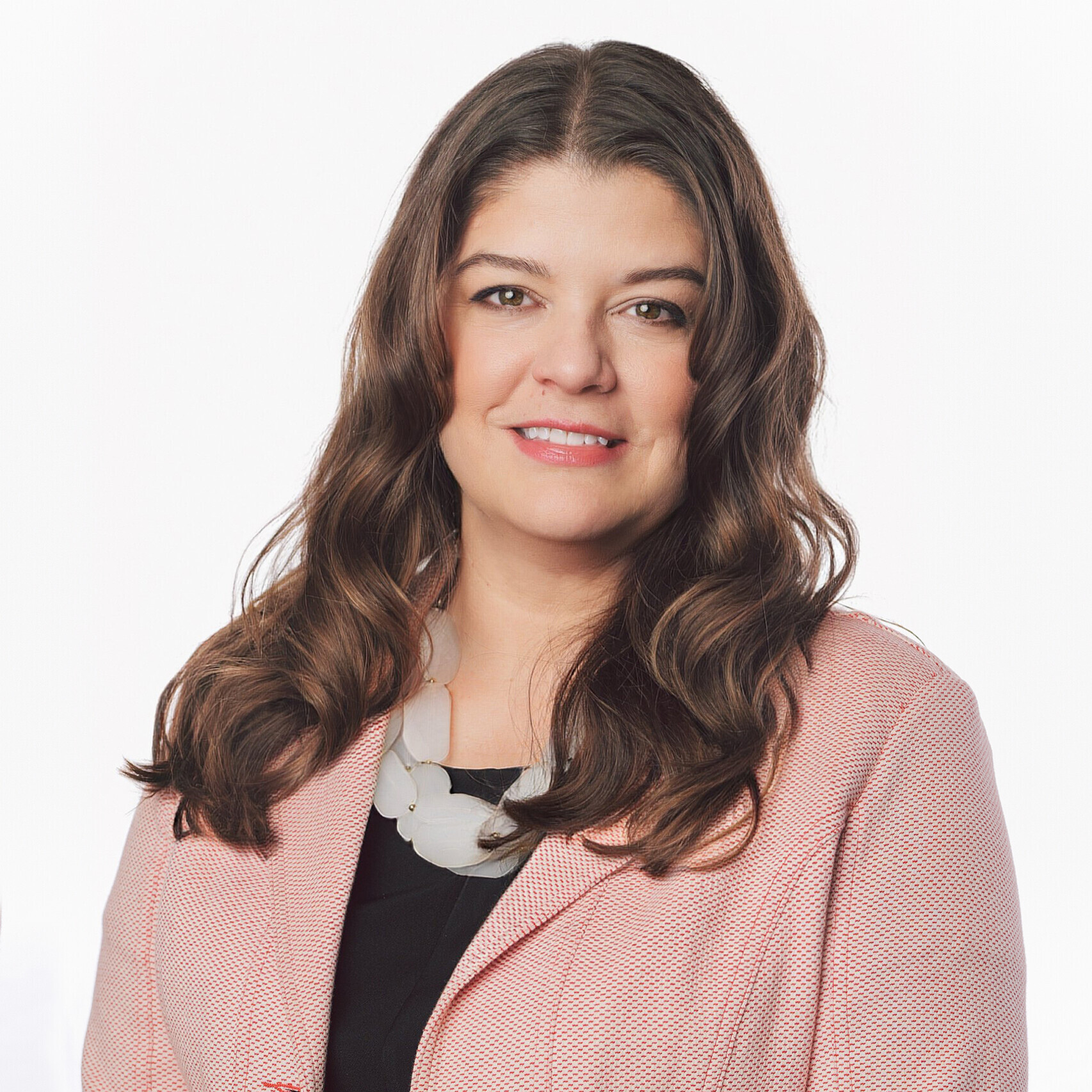


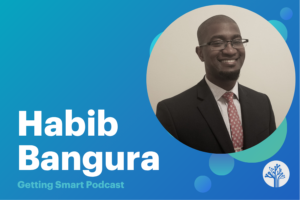
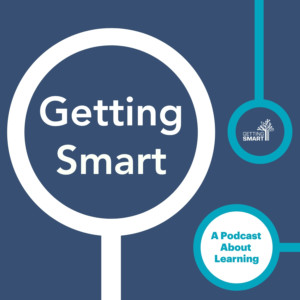

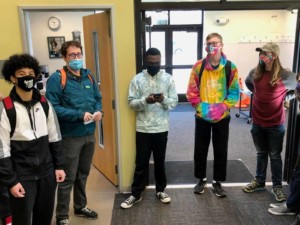
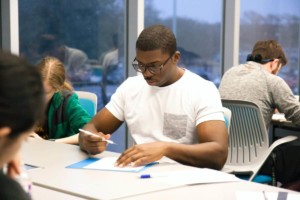

0 Comments
Leave a Comment
Your email address will not be published. All fields are required.